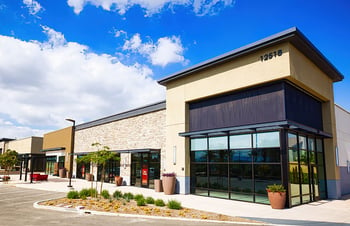 By Lucy Waters - Managing Director for Aria Finance
By Lucy Waters - Managing Director for Aria Finance
Calling the bottom of the market with absolute certainty is near impossible – there are simply too many moving parts. A slight shift in sentiment, borrowing costs, or broader economic conditions can dramatically change the outlook overnight.
However, there’s a growing sense that we’ve turned a corner in the commercial mortgage market. Speaking from my own experience and that of our team, we’ve seen a significant uptick in new enquiries, and our pipeline is looking stronger than it has in months. Buyers are re-entering the market now that interest rates have started to fall, and lender appetite is beginning to improve.
This is fostering a sense of optimism that has been missing for the past two years. The latest UK Commercial Property Monitor from the Royal Institution of Chartered Surveyors (RICS) supports this sentiment. It found that more than half of respondents believe the market has either hit rock bottom or is in the early stages of an upswing.
This shift in perception is crucial because confidence plays a significant role in driving market activity. When buyers and lenders believe the worst is over, they are more willing to make long-term commitments, which in turn stimulates further growth.
That said, challenges remain. We’re finding that while lenders are keen on industrial assets – particularly warehouses and data centres –securing finance on leisure, retail, and office spaces can be less straightforward.
Changing consumer habits and the shift to hybrid working mean these sectors are still facing headwinds, which is making lenders more cautious. Office demand, for instance, remains inconsistent, with businesses reassessing their space requirements post-pandemic. While some prime office locations continue to perform well, secondary and tertiary markets face a tougher road ahead.
Another hurdle is the ongoing mismatch between what buyers are willing to pay and what sellers expect. We are seeing plenty of cases where properties are going unsold for months only to be reduced in price a year down the line when the vendor realises they’re not going to achieve the valuation they want.
Institutional sellers, such as property funds, are being more pragmatic and are willing to accept reduced valuations in a way that many private sellers aren’t. That makes sense. A fund that bought a property at £6 million and can now only get £4 million is often willing to take the hit, knowing that diversification will help absorb the impact. Private investors, on the other hand, are far more likely to sit tight and wait for a better offer further down the line.
This pricing misalignment is weighing on the market to a degree, although there are signs that this expectation gap between buyers and sellers is beginning to close. According to CoStar, the data firm, the average discount to asking price has fallen from around 15% in the first half of 2023 to 7% in the second half of 2024.
Elsewhere, it’s interesting to see how commercial lenders are beginning to incorporate Artificial Intelligence (AI) into their processes.
So far, it seems most are focusing on using AI to drive efficiencies for administrative tasks and loan servicing. By automating routine processes such as document verification, compliance checks and risk assessments, lenders can reduce costs and improve turnaround times.
But I am concerned about AI’s use in underwriting. Regular readers of Commercial Watch may recall my previous column, where I pointed out that some lenders have started to adopt a rigid “computer says no” approach to underwriting. I worry that has the potential to get worse as lenders lean more heavily on AI.
One of the things that has traditionally set the commercial mortgage market apart is its flexibility – lenders have been willing to step outside their usual criteria for the right deal.
AI has the potential to enhance underwriting by identifying patterns and risks more efficiently, but it must be deployed sensibly.
While automation can speed up processes and eliminate human bias, there’s a real risk of good deals being rejected for no valid reason.
If AI is allowed to make black-and-white underwriting decisions with no or little human oversight, we could see viable transactions fall through simply because they don’t tick every automated box.
The best lenders will strike a balance between technological efficiency and human judgement, ensuring that AI complements decision-making rather than replacing it.
Looking ahead, it’s clear that opportunities are returning. Whether the commercial mortgage market truly has turned a corner remains to be seen. But I am more optimistic about its prospects than I have been for a long time.
Lucy Waters is Managing Director of specialist finance broker Aria Finance






